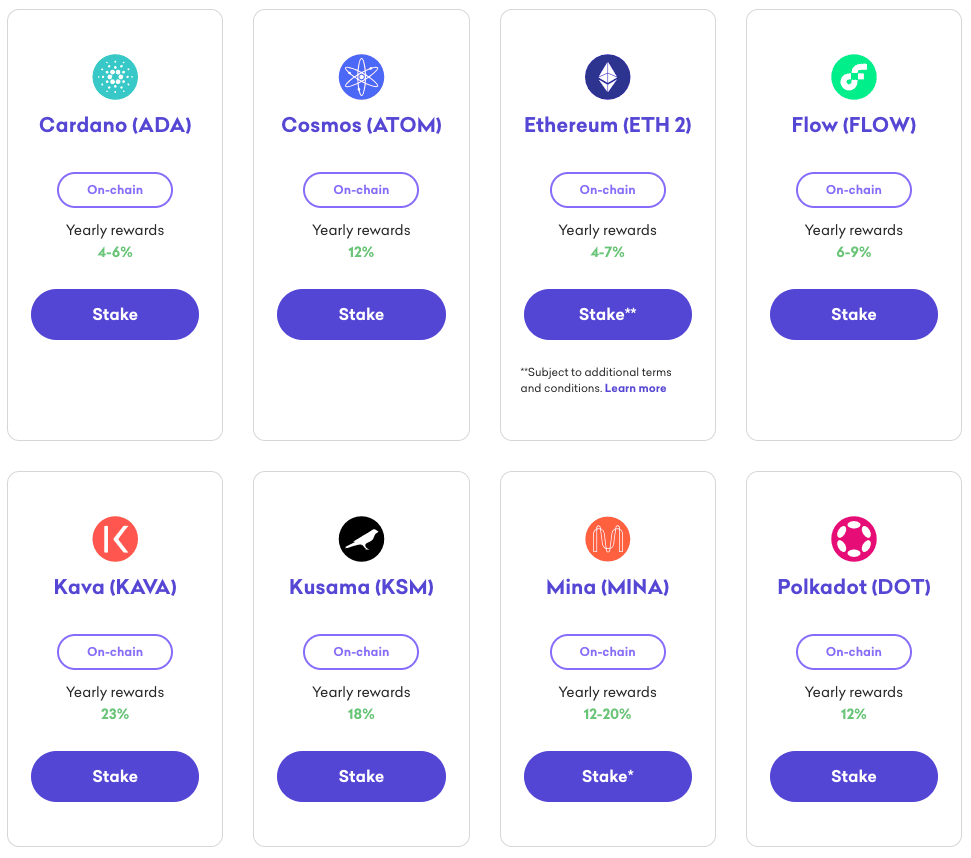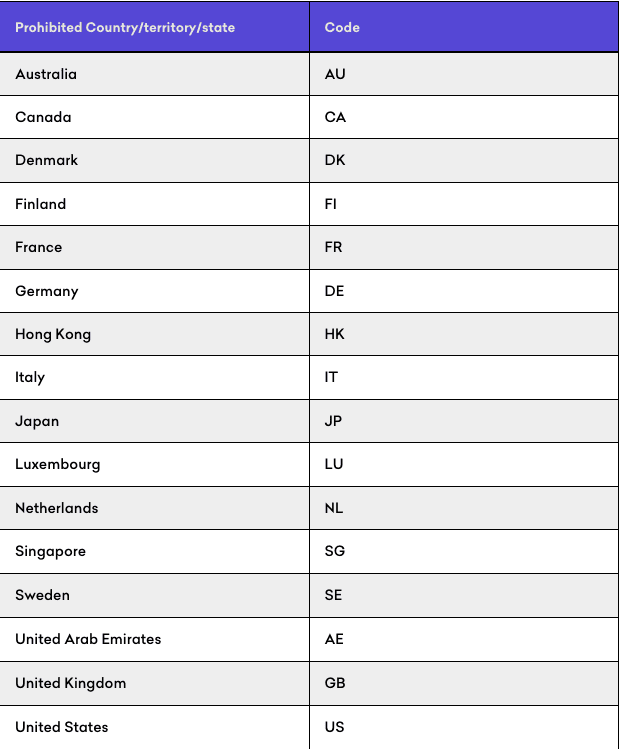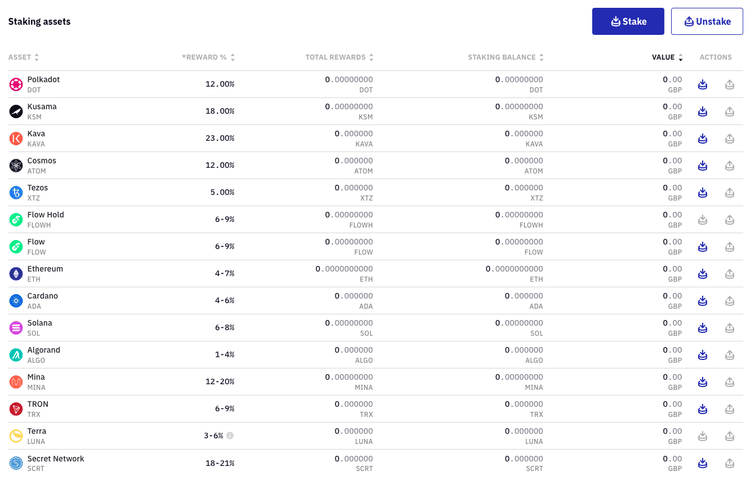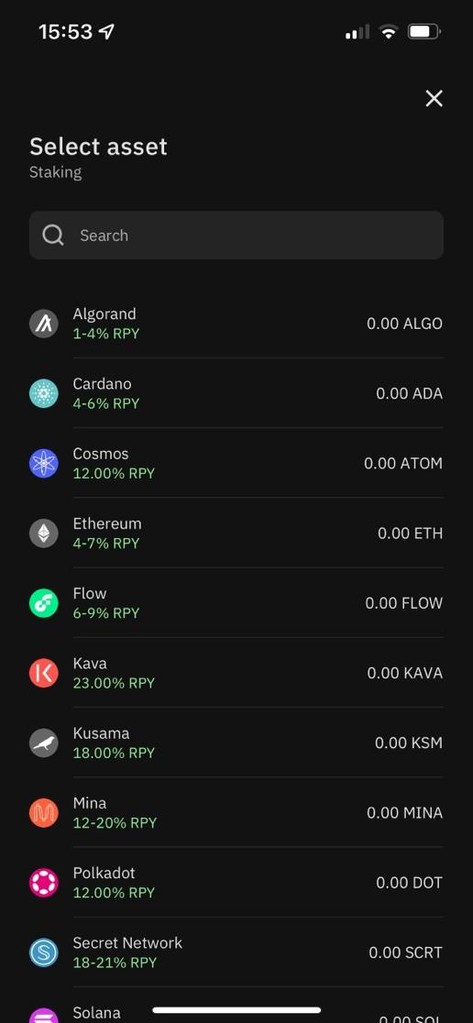TL;DR – Should I use Kraken to stake my crypto?
Kraken offers an easy-to-use staking tool supporting 15 coins and 2 fiat currencies. Rewards are paid out weekly or bi-weekly depending on the asset, and rewards range from 4% – 23% RPY. Kraken also supports ETH2 staking, with the downside being that your staked ETH might be locked up for up to two years.
Pros
Cons
Types of staking on Kraken
Kraken supports two different types of staking; on-chain and off-chain. On-chain staking is the most common type of staking in the crypto world. It uses blockchain POS (Proof-of-Stake) protocol to validate trades on the blockchain, generating rewards. Kraken only calls it on-chain because they also offer off-chain staking, so it’s easier to differentiate them. Off-chain staking provides more anonymity to traders as it takes staking off the blockchain. Because of this, it is not available for many countries with regulation restrictions, as all users need to be KYC verified, which means you need to prove your identity.
On-Chain Staking
Kraken offers 15 coins for on-chain staking, and users can un-stake their coins at any point without losing the rewards generated from staking. It also gives users the chance to automatically stake their rewards on top of their original crypto, meaning the rewards are compounded over time. The rewards are attractive, starting as low as 4% RPY on Cardano (ADA) and offering as much as 23% RPY on Kava (KAVA), and rewards are paid out twice a week. Other coins include Cosmos (ATOM), Flow (FLOW), Kusama (KSM), and Polkadot (DOT).
The only exception to flexible staking is Ethereum 2.0 (ETH2). Kraken gives users the opportunity to stake their ETH to support the ETH2 upgrade. The ETH2 upgrade aims to take the current ETH Proof-of-work network to a new Proof-of-stake blockchain, increasing scalability and reducing energy consumption. By participating in the upgrade, users can earn between 4 – 7 % RPY on their ETH, but it will be locked in until the upgrade is complete, which could be up to two years from now.
Off-chain Staking
Kraken offers support for 3 off-chain staking assets to users in eligible countries. The assets and potential RPY returns are Bitcoin (BTC) at 0.25%, U.S. Dollar (USD) at 2%, and Euro at 1.5%. Now we aren’t financial advisors, and it’s great that Kraken offers users the chance to earn interest on their fiat currency, but it almost doesn’t seem worth staking off-chain for such a low return. We think there are better options on the market, and If you want to stake BTC for a bit more of a return, Gemini offers 1.01% RPY and is available to U.S. users, or you can look at Crypto.com and earn up to 6% on BTC (subject to minimum amounts and staking CRO).
Staking Management
With Kraken, you can control all your staking assets from one dashboard. Just click on Earn on the top navigation panel of the desktop, and you’ll be directed straight to your staking dashboard. You can see the assets you’ve staked, your reward %, your total rewards earned, and your total staking balance. You can also easily stake and unstake a selected asset from the same dashboard.
Staking on the app
Kraken only allows you to stake from the Kraken Pro mobile app. You can use the same credentials as your regular Kraken account to login into the app. The mobile app offers all the same assets as the desktop, from an easy-to-use interface. Just head over to your balances and click on Stake, and a mobile dashboard will pop up with everything you need to do to start staking.
Conclusion
For a predominantly beginner-focused exchange, Kraken has done well to bring a feature that is considered ‘advanced’ to the broader market of users. It really is easy to use the staking features, and the fact that it’s all flexible staking takes a bit more of the risk out of it for the beginner trader. Though limited in its offerings, it probably isn’t a bad thing if you want to learn more about staking.
For the more advanced and experienced trader, there is value in staking with Kraken with its attractive rewards and flexible terms, but there are better exchanges out there with greater returns and more coins, like Binance or OKX. The limiting factor is always your geographical location, as every country has different regulations around staking. Kraken is one of the better options for U.S. users, but non-U.S. users might find it limiting.
Frequently Asked Questions
Staking on Kraken is simple. You just need to buy or deposit one of the eligible assets, choose the eligible asset from your spot wallet to stake, and let Kraken do the rest.
Kraken has a selection of 17 assets (including 2 fiat currencies) in total available for staking, 13 on-chain, and 3 off-chain.
The coins include Algorand (ALGO), Cardano (ADA), Cosmos (ATOM), Ethereum (ETH2). Flow (FLOW), Kava (KAVA), Kusama (KSM), Mina (MINA), Polkadot (DOT), Secret (SCRT), Solana (SOL), Terra, (LUNA), Tezos (XTZ), Tron (TRX), Bitcoin (BTC), Euro (EUR), and US Dollar (USD).
No, Kraken does not support staking for any stablecoins. You can, however, stake Euro and USD, with returns of 1.5% and 2% RPY, respectively, but this is only available in certain territories.
Kraken only offers flexible staking, so you can unstake your coins when you wish without losing any rewards that you’ve already gained. The only exception is staking ETH. Because of the ETH2 upgrade, your ETH will be used to help with the upgrades and, therefore, will not be available until the upgrade is complete, which might only be two years from now.
Staking rewards range from 0.25% to 23% RPY. A full list is below.
- ETH 2 (Ethereum 2.0) 4-7%
- DOT (Polkadot): 12%
- ADA (Cardano): 4-6%
- SOL (Solana): 6.5%
- KSM (Kusama): 12%
- ATOM (Cosmos): 7%
- FLOW (Flow): 4.6%
- KAVA (Kava): 23%
- XTZ (Tezos): 5.5%
- MINA (Mina) 12-20%
- SCRT (Secret) 18-21%
- LUNA (Terra) – 4.75%
- TRX (Tron) – 6-9%
- BTC (Bitcoin) – 0.25%
- EUR (Euro) – 1.5%
- USD (US Dollar) – 2%
- ALGO (Algorand) – 1-4%
Kraken pays weekly or bi-weekly, depending on the asset.
For purely flexible staking, it’s one of the more attractive offerings we’ve seen. 16 isn’t a large amount of staking options, but the rewards are attractive, and the chance to unstake when you want to might sway someone into deciding on Kraken over other staking options. If we had to compare it to the direct competition, Coinbase only has 6 coins available for staking with low returns.




